[pdfjs-viewer url=”https%3A%2F%2Fbipinadhikari.com.np%2Fwp-content%2Fuploads%2F2017%2F10%2FConstitutional-Crisis_ENG_Preface.pdf” viewer_width=100% viewer_height=1360px fullscreen=true download=true print=true]
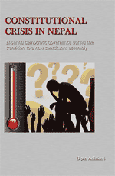

[pdfjs-viewer url=”https%3A%2F%2Fbipinadhikari.com.np%2Fwp-content%2Fuploads%2F2017%2F10%2FConstitutional-Crisis_ENG_Preface.pdf” viewer_width=100% viewer_height=1360px fullscreen=true download=true print=true]

[pdfjs-viewer url=”https%3A%2F%2Fbipinadhikari.com.np%2Fwp-content%2Fuploads%2F2018%2F05%2FConstitutional-Crisis-Book.pdf” viewer_width=100% viewer_height=1360px fullscreen=true download=true print=true]
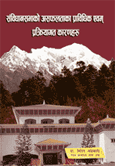
[pdfjs-viewer url=”https%3A%2F%2Fbipinadhikari.com.np%2Fwp-content%2Fuploads%2F2018%2F05%2FCA_RULES_Bipin_Adhikari_2013.pdf” viewer_width=100% viewer_height=1360px fullscreen=true download=true print=true]
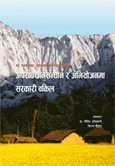

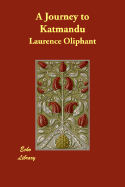
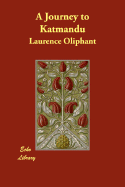
Laurence Oliphant, A Journey to Katmandu (London: John Murray, 1852)
Jung Bahdur Rana (1816 – 1877) has been one of the most talked about figures in the history of Nepal. The founder of the Rana dynasty, he has been remembered as a tyrant, a Maharaja, a Kazi (Prime Minister), a diplomat, a nationalist, and a brave man. Depending on one’s focus, several authors have tried to explore Jung Bahadur in terms of his vibrant personality, power, and clout in the Nepal that he lived in. One among such authors was Laurence Oliphant.
I n 1951, Oliphant, a British author and the son of the chief justice of Ceylon, had the opportunity to accompany Jung Bahadur from Colombo to Nepal, when he was on his way back to the country from his state visit to England. Oliphant was thirteen years younger than Jung. As a co-traveler, smart and curious, he got a very precious opportunity to know Jung Bahadur and spend sometime in Kathmandu, experiencing it very closely. The book, A Journey to Katmandu [London: John Murray, 1852], was his first one. It is a treasure of information not just on Jung, who had already succeeded to become Kaji Major General by that time, but on everything that Oliphant came across and had the opportunity to observe.
The book starts with the arrival of Jung Bahadur and his entourage in Ceylon. From there, they take on ‘Atlanta,’ one of the oldest steam frigates in the British Indian navy, to sail to Calcutta, the nearest sea port from Nepal, and then by some elephants to Benares. Jung had a short but elegant stay in Benares. “If he had been a lion in London,” notes Oliphant, “he was not less an object of interest at Benares.” Jung was always crowded with visitors of high degree during his short stay there. These visitors were both Indian and European. An old native king in particular was frequently seen visiting Jung. The reason behind these frequent consultations was his willingness to offer Jung the second daughter of the ex-king of Coorg (which was by then already taken away by the British) in marriage. So Jung did not disappoint him and married the ex-princess.
At Benares, a regiment of Nepal army was already waiting to escort him to Nepal. He favoured the inhabitants of Benares, and the English in particular, to review the Nepalese regiment. The platoon exercise they performed was exciting for many. Oliphant notes that the exercise was done with the “utmost precision at different notes of the music” without anybody commanding the platoon. Jung mentioned that his wife wanted that some other means be invented to put the men through their exercises than by “hoarse shouts, which grated upon her ear.”
The author tries to give a detailed sketch of Jung Bahadur’s career in the book. Apart from this, Oliphant has also described Jung’s shooting camp at Jaunpore, the area being close to Benares, his mode of dispatching an alligator, a Nepalese dinner, a picnic on the frontier, the Nepal Terai and its resources, the great elephant exhibition of 1851, and the scenes of war of 1814-16. As all western visitors who visited the valley of Kathmandu before him, Oliphant also tries to explain what he observed there including the distinguished features of the people of Nepal, their temples and architectures, and the resources and capabilities of the country. Of course, the author does not forget to mention the magnificent view of the Himalayas from the summit of ‘Sheopoori’ and the view of the Kathmandu Valley from the summit of the Chandragiri Pass. Based on his interactions, he also praises Jung Bahadur’s popularity with the Nepalese peasantry and the army.
At one place, Oliphant cautions: “It is worthwhile to make a trip to Nepaul, not only for the delight of viewing the romantic beauty of its scenery, of wondering at the stupendous height of the mountains, of roaming amidst its ancient cities, ruined palaces, and glittering pagodas, but in order to take a lesson in human nature, for we are not at liberty to suppose that the princes and nobles of this country are a more depraved class than any other body of men, the fact being that a Nepaulese follows his natural impulses, unflattered by the restraints of our standard of civilization and morality, and the results are apparent.”
Going ahead, Oliphant offers retrospection: “Is not the more civilized inhabitant of western lands actuated by the same feelings, and would he not behave in the same manner as his swarthy brother in the East, had he been brought up in the same code of morality, and were he as fearless of the consequences of his following the bent of his own inclination? But, if so, then the visitor to Nepal simply sees the game of human life played openly and unconstrainedly, and in no way hampered by the rules which prevail in more civilised countries; and the unsophisticated tyro has only to come here and learn in a month what would cost him a lifetime of anxious study in a country enjoying the blessings of civilization.”
The book has many such interesting opinions. Jung Bahadur was born almost at the end of the Anglo-Nepalese War of 2014-16. His feeling as regards to a war with the British, as Oliphant has noted, was not graceful when Jung said to him: “If a cat is pushed into a corner it will fly at an elephant, but it will always try to keep out of the corner as long as possible.” Of course, Jung had a policy in the matter of war and peace as well. The book is an interesting reading even after 160 years of its publication.
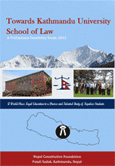
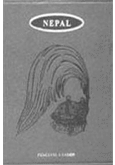

Perceval Landon, Nepal Vol. I & II (New Delhi: Rupa & Co, 2007) (Originally published in 1928)
Father Giuseppe de Rovato’s “An Account of the Kingdom of Nepal” was the first article written by any European on King Prithvi Narayan Shah – the founder of modern Nepal. It was written in 1786. The article was translated and published in English by Sir John Shore. It was published in the second volume of the Asiatic Researches (Calcutta) in 1790. It dealt with the consolidation of power by King Prithvi Narayan within the Kathmandu Valley between 1767-77.
A number of books were written on Nepal and its rulers after this publication. Perceval Landon’s book Nepal has come into existence after almost 138 years. Landon (1868-1927) was an English writer. He was also a journalist, now best remembered for his classic and much reprinted Ghost Story “Thurnley Abbey.” But for the people of Nepal, Landon is remembered for his two volume work on Nepal with several illustrations and maps.
Vol I of Landon treats the inward and outward politics of Nepal from the time it grew into a national entity. Many of the history that he has dealt with till the advent of Jung Bahadur and his visit to England is dealt by others as well. He examines Nepal in the political, religious and historical context vis-a-vis the reality of the twentieth century. In Landon’s point of view, this country is full of antiquities and relics of the past – is unique because it has never suffered the repercussions of the Christian or the Moslem expansion. This is a great complement of course. But the second volume goes beyond.
In second volume, Perceval Landon has remarkably explained Prime Minister Chandra Shamsher and his efforts in nation building. There are details about his early life, his personality, the Lhasa Mission of 1904, his visit to England, and his role in concluding the Treaty of 1923 with British India following the World War I. Landon has applauded Chandra’s judicial and social reforms and his commitment for the Nepalese Army, public works, roads and bridges, and land reform. “The work of the Prime Minister in gradually introducing reforms into Nepal has been hard indeed; but it has been carried out with resolution, steadiness and tact.” Here, Landon also concentrates on the people and politics of the land. The towns, rulers, races and architecture of Nepal also find space here. He also examines the role of Buddhism in Nepal. According to the author, “Buddhism and Hinduism have carried on relations partly of hostility and partly of sympathy which are almost unparalleled in the history of comparative religion.” This is his distinctive finding.
Landon has dealt with races of Nepal as well. He describes the Newars are as the most important of the quasi-aboriginal races in the country. At first sight, Landon writes, “it would seem certain that Thakuris and Khas are in fact due to an emigration from India caused by the ravages of Mohammedan conquerors. It is only right, however, to notice that the existence in Nepal of a pure Hindu race called Khas is mentioned in ancient chronicles as early as the Year AD 1000.” It is possible that the Gurungs and Magars came to Nepal during one or more of the historical Mongolian migrations to the west in search of food, peace, and what is called nowadays a place in the sun. Landon finds that the Magars, another important community of Nepal, originally occupied the Tarai and lower mountain districts near Butwal and Palpa. In the east of Nepal by far the most important group is that of the Kirantis. As to the Limbus, Landon says they are among the oldest recorded populations of the country and their features indicate that they are descendants of early Tibetan settlers in Nepal. Of other tribes, he also mentions Sunwars and Murmis. There is a brief note that respect for caste regulations is everywhere on the increase rather than the decline in Nepal.
The Appendices in Volume I and II are no less significant. Volume I includes armorial bearings and flags, regalia, anthems and titles, role of succession to hereditary prime ministership of Nepal, the law of royal descent, decorations, weights and measures, census returns, the arsenal museum, pillar inscriptions in Nepal, and some of the more important books and articles on Nepal (in order of date). Appendices in Volume II include notes on Buddhism in Nepal, Nepalese races, the records of the invasion of Nepal by the Chinese in 1792, and Treaty of Peace between Nepal and Tibet in 1856. Landon has given an interesting list of Europeans who visited Nepal during 1881-1925. It shows that in the course of forty-four years about 153 persons visited Nepal. Out of this, 55 Europeans were the guests of the Prime Minister. This figure excluded British diplomatic corpse based in Kathmandu.
Hinting on the relationship between England and Nepal, Landon notes: “There was no treaty obligation, no contract, not even an understanding between the two peoples, but the Gurkhas came down in their thousands to stand once more beside the Indians [read British] in a day of trial. Nothing could better express the relations between Nepal and India [read Britain] than the answer of a high authority in Simla to me when I asked what the policy of the Indian [read British] government towards Nepal was. ‘We have no policy. We have only friendship.’ It is a great phrase, and it deserves to be remembered in Whitehall as well as in Simla and Kathmandu.”
“[T]he great days of Nepal are before her, not behind her. I have no wish to celebrate the international significance of this keen and united state of mountain soldiers, wholly independent of Indian [read British] political life; free from the disintegrating and troublesome rivalries of India [read Britain] upon which she looks down from her hill fastnesses; in a military sense more highly trained than any other race in Asia; rich with traditions gilded by great and recent glory; and dowered also with an ambition which knows few limits.”
The book also focuses on the Chinese invasion of Nepal and the tussle between the two regarding Tibet. The keynote of the book, however, is the emphasis of Perceval Landon on the absorbing patriotism of the Nepalese rulers to secure their beautiful kingdom from foreign threat whatsoever.
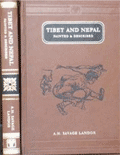

A. Henry Savage Landor, Tibet and Nepal (London: A. & C. Black Soho Square, 1905)
The book Tibet and Nepal by Arnold Henry Savage Landor (1865 – 26 December 1924) is the story of his adventures to these forbidden lands. As a painter, explorer, writer and anthropologist, born in Florence, Landor liked the Himalayas and its vicinity in Nepal and Tibet. It is his love of the Himalayas that provoked him to recount his adventures in this book.
In 1897 Landor, a British national, starts out on his travels to explore Tibet. The exploration was not without challenge. He was captured. He suffered terrible adversities and tortures there. Nevertheless, he discovered the sources of the Indus and the Brahmaputra rivers. After being away for next two years, he returned to Tibet a second time and then to Nepal. His return to the beautiful mountains and the Himalayan region led to the publication of two new books: In the Forbidden Land (1898) and Tibet and Nepal (1905). The first book was the account of his journey in Tibet, where he was captured by the Tibetan authorities, which followed with imprisonment, torture and ultimate release. It was published by William Heinemann London. The theme of the second book Tibet and Nepal respectively came seven years later. But the most of it is about Tibet than Nepal. Nevertheless, it is an interesting book, and at the time it was published, it was a treasure of information about the lands which were not much known to the western world.
Arnold Henry Savage Landor set off from Bombay, the sea port, to the Kathgodam by rail with his blankets, survey instruments, cameras, and hundreds of plates, provisions, and painting materials. From there, he traveled by trail to the hill station of Almora in the North-West provinces, which he again made his starting point as in the first journey. He took some local porters and guides and a Tibetan pony with him. Contrary to the usual custom of British mountaineering expeditions those days, he avoided taking Swiss Alpine guides as his company. Narrating his experience, Landor noted: “Mountaineering, by any one in full possession of all the senses, is a delightful amusement, and possibly the pleasantest, healthiest, and most instructive exercise in existence.”
From Almora to the Tibetan frontier, Arnold Henry Savage Landor followed, to a great extent, a different route from the one he had taken on his first journey, as he wanted to visit en route the interesting shrine of Debi Dhura at 6630 ft. The shrine housed Mahadeva, Varahi Devi and Bhimsen. After leaving this place, he walked towards the summit of the ‘granitic’ range which the trail followed all along, amidst country thickly wooded with oaks, rhododendrons, pines and deodarus. Further away toward Tibet, Landor remarks: “I had heard most peculiar rumours from the natives that the Tibetans had come in great force on to British territory at Garbyang, and with great pomp and much beating of drums were proclaiming that the British government were afraid of coming to Tibet, and that the entire Bias and Chaudas had now been called to Tibet.” A spy that Landor had sent over to Taklakot reported back to him that great commotion reigned there. Bridges had been hastily destroyed, stone barriers were put up, whole warlike preparations of all kinds were carried on in feverish speed. “A bluffing message was sent over by the Tibetans to inform the Political Agent that 5000 men were ready to meet [his] force and capture [him] again, when they would cut off [his] head and throw [his] body into the river – a threat which was by no means new to [him].
During his visit, Arnold Henry Savage Landor claims to have climbed 23,490 ft Nampa (now Api) summit and explored western Nepal as well. Seventy five remarkable colors and black and white illustrations painted by the author during his adventures are included in the book, each with titled tissue guards. There are yellow Lamas with prayer wheels, a typical native of North-Western Nepal, the Elfrida Landor Glacier of Nepal, the Tinker Pass in the border of Nepal and Tibet, a Tibetan spy in the disguise of a beggar approaching the author’s camp, a Tibetan woman of a commoner class, Tibetan dogs, the sacrifice of a yak, and goats carrying loads of borax. His paintings of the mountain peaks, the people, the customs, the everyday life, and the animals are beautiful and more telling than any photograph. He has written about his impressions and painted his objects without any hitch. At one point, he even goes on to say: “I well knew the contemptible cowardice of the Tibetans, and I took but little notice of these threats.” He depicts Tibetans as religious savages. This type of typical remark about the enemy, who seems to be uncompromising, is not rare in the British writings on Nepal as well. His account is for obvious reasons less than objective in some places in the book.
Arnold Henry Savage Landor’s annoyance about the Nepalese border security guard who warned him not to cross over into the forbidden Nepalese territory (“you cannot travel on Nepalese territory. It is forbidden to foreigners, and I have orders to stop you”) also finds a place in the book. He seems to be generally exaggerating when he says: “Pounding with big rocks and by the aid of a wooden lever we got the door [of the fort] loosened, and while the garrison’s attention was directed to prevent our entering that way, four of my best men and I climbed over the wall on the opposite side of the fort and covered the defenders with our rifles. I demanded that they should lay down their weapons or I would shoot.” The guard, unable to fight out the strangers, as Landor has contended, followed them for some days, and always at a most respectable distance – until they got high up among the snows and glaciers.
The book of Landor has many references on western Nepal. Although he has many remarks on the places he never visited, and had very few objective studies on, there are other interesting observations as well. He writes about sparse population and mixed people in the Western hills of Nepal. He also notes of seeing cross-breeds of Shokas and Nepalese, which seemed to produce most striking heads in Nepal Himalayas. The Western zone, according to Landor, is inhabited by non-Gurkha tribes, such as the Doteli and Jumli, as well as the wilder tribes, such as the Chepangs and Kusundas. Then there are other minor Hinduised tribes generally known as Parbatiyas (or hill men). The Brahmins in his opinion are “not so strict in the observance of prejudices” as one would see in India. He points out that the Nepalese women are not unattractive. However, Landor describes the Tharus in the Terai as “a poor, sickly-looking race.”
In the opinion of Arnold Henry Savage Landor, the form of Buddhism practiced in Nepal closely resembles that of Tibet. “Superstitions are rampant, both among Brahmins and Buddhists, and of course even more so among the wilder tribes.” There are some mistaken information as well. One passing example is his finding that the body of the deceased among Brahmins is buried and not cremated, while several others, however, cremate their dead. The reverse is closer to the truth. In any case, the perspective of Landor is always attention-grabbing. It is a book that anybody interested in Tibet and Nepal will enjoy reading.
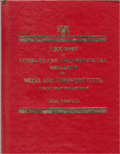
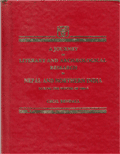
Cecil Bendal, A Journey of Literary and Archaeological Research in Nepal and Northern India During the Winter of 1884-85 (New Delhi: Asian Educational Services, 1991) (Originally published by Cambridge in 1886)
The book A Journey of Literary and Archaeological Research in Nepal and Northern India is a window on some very important aspects of the region’s rich cultural heritage. To a Nepalese reader, the study of inscriptions and colophons in this book is as much important as the study of several such historical objects by Daniel Wright, Bhagwanlal Indraji, Harapada Das Chattopadhyay, Sylvain Levi or K. P. Jayaswal in the past. It is a little yet remarkable piece of work.
Written by Cecil Bendall, a senior assistant at the University of Cambridge in the department of Oriental MSS from 1882 to 1893, the book is based on many Sanskrit manuscripts collected by the author for the University Library from north India, Nepal and Bombay with a grant from the Worts Fund in 1884–5. Before Bendall, in the 1870s, Daniel Wright, surgeon to the British Residency at Kathmandu Nepal, had collected a large number of Sanskrit manuscripts from Nepal. The new book of Bendall goes forward in this pursuit.
Bendall arrived in Kathmandu on November 9th of 1884. Before reaching Nepal, in India, he had consultations with Pandit Dr Bhagwanlal Indraji, whose researches in Indian antiquities, chiefly published in the Indian Antiquary, were well known both in India and Europe. In his prefatory statement, Bendall cautions that his study will seem “very partial and meager, if compared, for instance, with the admirable accounts and extracts given in the reports of Professors [Peter] Peterson and Ramakrishna Bhandarkar.” His visit to Kathmandu was short. Time was an important factor in the study. However, the book deals with classified lists of MSS personally collected by the author, tough list of MSS from Bombay, notes on particular MSS acquired, and notes on MSS in private possession. They bring many new facts about Nepal to light.
In Kathmandu, the author occupied the travelers’ bungalow belonging to the Government of India. He was first acquainted by the Resident with the Durbar explaining the purposes of archaeological search. His conversation with Pandit Indranand, the son of the late Pandit Gunanand, who helped Dr Daniel Wright to compile the History of Nepal was very helpful during his stay in Kathmandu. He helped Bendall with necessary guidance in his pursuit, especially in visiting several of the more distant localities of archaeological interest. He also profited much by the cordially rendered assistance of the Residency Mir Munshi Durga Sharan Mishra – an Indian native. Bendall was able to study numerous historical inscriptions and Nepalese literatures. He was also able to acquire several MSS in the valley.
The author was favoured with an interview with the Prime Minister Runoodeep Singh as well. In his preface to the book, Bendall remembers him, even though he was already slain during the disturbances in Kathmandu in November 1885. His remark that “whoever may be the new rulers, I trust they will be no less ready than the late Premier to afford a courteous reception to scholars” – shows that the Premier had been supportive to the research undertaken by him. He also sent him a number of coins to examine.
It is interesting to find from the book of Bendall that the Prime Minister of Nepal had a wonderful library. Bendall says: “I did not, however, enter the room in which the books are usually kept, but the whole collection, consisting of many thousands of MSS, was brought for me from the palace to the Durbar school building. So much trouble having been taken for my convenience, I made no enquiries as to the library room itself. Possibly the books are usually stored in one of those small rooms in which some of the best Indian collections of manuscripts (e.g. that in the splendid palace at Oodeypore) are even not kept and which contrast so curiously with European ideas of a commodious library. If this be the case, we must hope that educational progress, now, we trust, commencing in Nepal, will extend to the affording of still greater and more regular facilities for the study of the unique literature of the country preserved in this collection of MSS, in many respects, as we shall see, the finest in India.”
“As to the obliging library staff, I will only say that, however, the books are kept, they are found with a quickness that many a European library cannot equal.” Referring to Daniel Wright’s 1875 comment that the subject of schools and college in Nepal may be treated as briefly as that of snakes in Ireland, Bendall makes a point: “now we have at least one building in which both English and Sanskrit, and, as I have every reason to believe, well taught.”
At one point when he was visiting a temple of Narayan in ‘Khaumar-tol” in Bhadgaon, Bendall comments, “I regret that the crowd of idle followers who pursued me into the quiet little courtyard where the inscription, with some others of later date, was fixed, so disturbed the tenants of the ‘Math’ that, on returning to take a copy, I found the door closed against me. I generally found, I may observe, that, in Nepal, where Tibetans and Chinamen attract no notice, the mere dress of a European is sufficient to draw a train of 30 or 40 idlers, which would soon be doubled if an object like a photographic camera were produced.”
At another point he noted that his success in searching MSS was greater than I expected, but his negotiations were, he feared, interfered with by the officiousness of the Nepalese ‘Mukhiya’, or guard in attendance on him. As a general rule he noted he had nothing to complain of in the demeanour of these men; on the contrary, on several occasions, so far from acting as spies or standing in the way of his investigation, they were of great use in overcoming the stupid prejudices against strangers manifested especially by the Buddhists of this country.
In a footnote, Bendall points out that the people of Nepal seem stronger and far more active than most of the inhabitants of India. Appendix I of the book has a table of inscriptions with the original text and translation in English. Appendix II includes the revised chronological tables of the kings of Nepal. The Index of the book chiefly deals with the names of persons and of places visited. The titles of MSS (not the names of their authors) are also included, and printed in italics, in cases where some special notice or citation is given in the text. They all make the book very useful to the students of Nepalese studies.